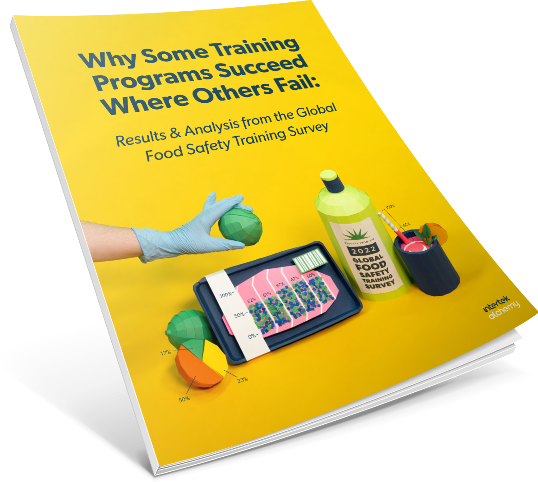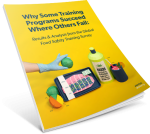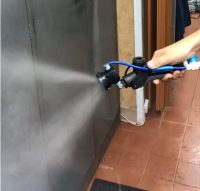Inflation can create a challenging environment for the food industry, making it more difficult to maintain product quality, safety, and transparency. In August 2022, U.S. food inflation hit a 40-year high of 11.4% and has since remained persistently high, at 10.1% in January 2023. Manufacturers and suppliers must stay vigilant and take proactive steps to mitigate the risks posed by stubbornly high food inflation and increasingly complex supply chains.
Inflation can be a catalyst for risk in food supply chains for several reasons. Rising prices could encourage bad actors or tempt manufacturers and suppliers to cut corners or compromise quality to maintain profit margins. This can lead to an increased risk of food fraud, where lower-quality or counterfeit ingredients are substituted for genuine ones or where mislabeled products are sold to unsuspecting consumers. Supply chain disruptions could increasingly affect manufacturers as suppliers struggle to manage the increased costs of raw materials, transportation, and labor, as seen this winter in Europe, with the UK experiencing shortages of tomatoes and eggs. This can result in delays, shortages, and other logistical challenges that can make it difficult to maintain product quality and safety.
Inflation can also increase food allergy and sensitivity incidents. Mislabeling or allergen contamination due to substituted alternative ingredients could put allergen or intolerance sufferers at greater risk, as well as your brand. With the threat of food fraud lurking in increasingly complex and volatile supply chains, what steps can food manufacturers take to protect themselves and their customers?
Tackling Food Fraud and Allergen Incidents
Despite legislative and industry process improvements, food fraud continues to be a significant risk in the food industry, costing businesses an estimated $30 to $40 billion annually. Food fraud refers to any act of deception, intentional or otherwise, that is intended to result in the sale of a food product that is not what it purports to be. This can take many forms, from adulterating ingredients to misbranding and counterfeiting.
The consequences of food fraud can be severe and include economic losses, harm to human health, damage to the reputation of food companies and loss of consumer confidence in the food supply. Food fraud can also cause environmental consequences, including the illegal use of pesticides, or overfishing, which can have long-term effects on the environment, wildlife, and ecosystems.
Subscribe to the Food Safety Tech weekly newsletter to stay up to date on the latest news and information on food safety and quality.
In recent years, several high-profile cases of food fraud have occurred, including the widespread contamination of infant formula with melamine in China and the horse meat scandal in Europe. These incidents have highlighted the need for better measures to prevent food fraud and to ensure the safety of the food supply.
To protect the integrity and bolster consumer and producer confidence in organic food, which has long been a target of food fraud, the USDA published one of the largest-ever reforms to their organic program in January 2023. However, many risks remain as legislation tries to catch and close loopholes.
One of the challenges of preventing food fraud is that the supply chain is often complex and global, making it difficult to track the origin of ingredients and monitor their quality. In addition, many food frauds are not detected until they reach the end-consumer, making it difficult to recall contaminated products. In order to mitigate the risk of food fraud, it is essential to plan ahead and implement strong supply chain management practices, including the use of technology such as traceability systems and predictive analytics.
A good starting point to mitigate your risk of food fraud is to conduct a deep dive into your highest-risk raw materials and suppliers instead of trying to tackle everything at once, particularly if you have a large number of raw materials to assess. For instance, you may want to prioritize raw materials that have been linked to recent fraud incidents, such as infant formula, honey, and olive oil.
Four Steps to Protecting Your Business
Know your supply chain. Controlling and understanding your supply chain is essential for minimizing risk. It is important to audit your supply chain back to the field, if possible, or at least to the production and processing facility. For smaller businesses, forensic auditing may not be feasible. However, there are still steps they can take to protect themselves, such as seeking third-party certification programs that verify the sustainability, quality, and ethical sourcing of ingredients. Going back by more than one step in your supply chain is crucial, and conducting a vulnerability assessment of your raw materials and suppliers is an excellent starting point.
Shop around safely. Review the market for potential alternate suppliers or less ‘at risk’ ingredients, subject to the required quality checks and labeling requirements. It is crucial to thoroughly assess current and potential new suppliers and ensure they meet the minimum Global Food Safety Initiative (GFSI) certification standards, wherever possible. Scrutinize all raw material specifications, including the country of origin, as countries with less established food safety regulations may pose a higher risk. Establishing solid relationships with your suppliers and engaging in regular communication with them is also essential to maintain a high standard of quality, safety, and sustainability.
Be vigilant about ingredients. Markets are constantly evolving, and economic, social, and environmental changes can impact the substitution risk profile of any ingredient that you purchase. To manage this risk, it is essential to have an up-to-date awareness of the various market forces that affect ingredients and their availability.
It is important to note that product adulteration may not always be motivated by economic factors. As ingredients become in short supply, manufacturers may make local substitution decisions to keep the supply available. Remember, there is no substitute for a thorough risk-assessed approach to managing this challenge with a complete and detailed understanding of your supply chains.
Utilize training to build awareness and readiness. Training employees on how to identify, prevent and respond to incidents of potential food fraud or allergens is essential but often challenging for food manufacturers. Regular training should include the types of fraud, how to recognize suspicious behavior, and the importance of accurate record-keeping. Ensuring your teams are trained on what to do is there is a food fraud issue is also key, as is testing the teams through mock exercises to see how they would manage a food fraud event in the business.
Persistently high food inflation rates have created a challenging environment for the food industry, making it harder for manufacturers and suppliers to maintain product quality, safety, and transparency. Food businesses must exercise extra vigilance to face an increased risk of food fraud, supply chain disruptions, and an increase in food allergy and sensitivity incidents. Now is the time to proactively mitigate these risks by prioritizing transparency, gaining control and understanding of supply chains, and acting to prevent food fraud.
It is important to note that no system is foolproof. Food manufacturers should regularly assess and improve their supply chain management practices to ensure they are up to date with industry best practices and changing threats. Increasing your transparency in the ingredient supply chain requires a commitment to responsible sourcing and a willingness to invest in traceability, certification, and supplier relationships. While the risks to food quality and safety are well known, businesses need to ask themselves the right questions and take the necessary steps to protect themselves and their customers. By doing so, they can protect their brand reputation and consumer confidence in the food supply and the environment.























